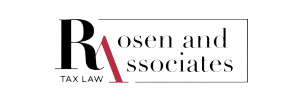
Marine Atlantic v. The King – An Overview
In Marine Atlantic v the King (2023 TCC 95) the issue before the Court was the Appellant’s entitlement to input tax credits (ITCs) in respect of property and services acquired or imported for consumption, use, or supply in the course of its commercial activities. Since the Appellant made both taxable and exempt supplies, they had to determine, for each acquisition or importation of property or a service, the extent to which it acquired or imported the specific property or service for consumption, use, or supply in the course of its commercial activities. It had to make a similar determination for the property (the New Vessels) that it brought into Nova Scotia and Newfoundland and Labrador.
The Tax Court of Canada (TCC) released its decision on July 10, 2023, highlighting the criteria
for a “fair and reasonable” allocation of costs in calculating ITCs under Part IX of the Excise Tax Act (ETA).
TCC’s Criteria for “Fair and Reasonable” Allocation:
- It should be rooted in facts and supported by evidence.
- It must accurately mirror the economic realities of the business.
- It should focus on activities that consume or use taxable inputs to make supplies.
Input Tax Credits (ITCs)
For businesses involved in both taxable and exempt supplies, like Marine Atlantic, costs require allocation to identify eligible amounts for ITCs. The claim for ITCs depends on the intended or actual use of the property or service in the commercial activities, as defined by subsection 123(1) of the ETA.
Further, Commercial activity is defined in subsection 123(1) of the ETA. The relevant portion of the definition here is “(a) a business carried on by the person … except to the extent to which the business involves the making of exempt supplies by the person”.
Business is defined in subsection 123(1) of the ETA as follows:
“business” includes a profession, calling, trade, manufacture or undertaking of any kind whatever, whether the activity or undertaking is engaged in for profit, and any activity engaged in on a regular or continuous basis that involves the supply of property by way of lease, licence or similar arrangement, but does not include an office or employment.
Legal Framework
Sections 141 and 141.01 of the ETA acknowledge the complexity and expense of analyzing each cost item individually, permitting registrants to estimate allocation, provided the method chosen is “fair and reasonable” and consistently applied. Accordingly, the Court referenced Stewardship Ontario v. The Queen and University of Calgary v. The Queen – stating that a person’s business is broader than the person’s commercial activity. A business includes all of the activities of a person, regardless of whether the activities involve the making of taxable supplies or of exempt supplies. However, a commercial activity only includes the activities of the business that do not involve the making of exempt supplies.
Summary
- When determining input tax credits for a person, one must attribute all costs that the person incurs in the course of its business to the making of supplies. This includes both direct costs and indirect costs.
- Once all of the costs are attributed, then one must determine, for each individual direct cost and indirect cost, the extent to which the relevant property or service was acquired, imported or brought into a participating province for consumption, use or supply in the course of the person’s commercial activities.
- Property or a service is deemed to have been acquired, imported or brought into a participating province for consumption or use in the course of the person’s commercial activities to the extent that the property or service is acquired for the purpose of making taxable supplies for consideration in the course of the person’s business.
Conclusion
In conclusion, when making both taxable and exempt supplies, a GST registrant must devise a fair and reasonable cost allocation method. As emphasized in Marine Atlantic, the registrant must exercise discretion when establishing a method aligning with its business, provided it complies with the ETA. Thus, the registrant retains authority to define a method most in line with its operations, thereby avoiding some attempts by the CRA to enforce alternative stricter methodologies.
**Disclaimer: This article provides information of a general nature only. It does not provide legal advice nor can it or should it be relied upon. All tax situations are specific to their facts and will differ from the situations in this article. If you have specific legal questions you should consult a lawyer.


Excellent article! This was an interesting read.